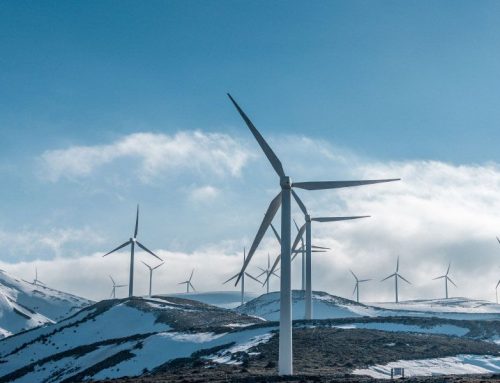Wasting water contributes to your energy bill
Each household in the UK uses on average around 345 litres each day. About 28 per cent of a typical household’s heating bill is from heating the water for showers, baths and hot water from the tap. This is on average about £125 a year.
Saving water can reduce your water bill (if you’re on a water meter), reduce your energy use and bills, reduce the impact on your local environment, and reduce carbon dioxide emissions by using less energy to pump, heat and treat the water.
When we use water, we are often using energy, mostly to heat the water. Generating energy produces carbon dioxide emissions which is one of the main greenhouse gases causing climate change. Heating water for use in our homes makes up about four per cent of the UK’s total carbon dioxide emissions.
Quick wins to save money on your hot water bills
- Fix leaking taps, a dripping tap can waste more than 5,300 litres of water a year.
- Use less water, and hot water in particular.
- Insulate your hot water cylinder – a well fitted extra tank jacket could save you around £20 a year, more if you heat your water electrically. Insulating the hot water pipes will save more energy, and can help your taps to run hot more quickly.
Controls – make sure you have the right controls, and have them set correctly to give you enough hot water when you want it, and not when you don’t. - Fuel switching – gas is cheaper than electricity or oil, so consider switching if you can.
- Solar – once fitted, solar water heating can provide a good proportion of your hot water requirements with virtually no running costs, click more info.
The hot water in your home is likely heated by one of two methods – a boiler or immersion heater – unless you have installed a renewable heating alternative such as a heat pump.
Immersion heaters
In some homes, particularly those with electric storage heaters, water can only be heated by immersion heater. There may be two immersions, one in the top of the cylinder and one in the bottom. Usually the bottom heater comes on at night, and heats the whole cylinder using cheap off-peak electricity. The top heater is used to provide additional hot water during the day if required, using expensive peak rate electricity.
Tip: Do not leave a peak-rate immersion heater on all day and all night. You will waste a lot of money keeping water hot when you don’t need it.
Statistics from Energy Saving Trust
- Replace your boiler with a newer, more efficient model.
- Fit better controls and use them to make sure your boiler only provides heat where and when you want it.
- Switch to a cheaper or lower carbon fuel or technology. Find out about renewable technologies for generating electricity and heat.
- Make any insulation and draught-proofing improvements that you can.
- Use chemical inhibitors to help maintain central heating system efficiency.
If your home improvement work requires scaffolding, such as a loft conversion, this would be an ideal time to install solar panels. Scaffolding is a significant part of the solar installation costs, so combining it with other works could make them much more cost-effective. Solar panels are most effective on south-facing roofs at a pitch of around 30 degrees.
There are various other factors to consider when thinking about whether your home set up works and how best to maximise the installation. For more information on installing renewable energy system at home, see here .
Energy Saving Trust
Lighting accounts for 15 per cent of a typical household’s electricity bill. It’s good time to consider changing to LED bulbs.
LEDs are the most efficient light bulb on the market and have made significant advancements since their early days of low quality lighting. They are available with varying degrees of brightness, colours, and ‘colour temperatures’ – from warm white to cool white in appearance – and can suit almost all light fittings. Although the cost of bulbs is coming down, it can sometimes appear prohibitive, so consider the most used lights throughout your home as a first step.
Statistics from Energy Saving Trust
Make sure your extension is insulated to Building Regulations. You could Consider having the rest of your home to insulated as well. If your home has cavity walls, a layer of insulation can be blown into the cavity.
If you have solid walls (usually homes built before 1920), you can have either internal or external insulation added. Applying external insulation at the same time as your extension would ensure the exterior finish to the main building matches the extension, improving the aesthetic of your home.
External insulation will also make those cold rooms in your home warmer and, so long as sufficient ventilation is maintained, it can help alleviate many causes of damp and mould. Furthermore, solid wall insulation could save around £225 a year from the heating bills of a typical gas-fuelled semi-detached home. Savings could be significantly higher in detached properties, around £375 per year in a typical gas-fuelled detached home.
Statistics from Energy Saving Trust
Planning your new bathroom is a great time to think about being more efficient and reducing water usage throughout the home. There are many different types of shower head that aerate the water thereby reducing water usage without a negative impact on your shower experience. A water efficient shower head could save a four person household (e.g. a family of four or even a shared student flat) around £40 a year on gas for water heating, as well as a further £55 a year on water bills if using a water meter. You should also look for low-flush toilets – saving at least one litre of water per use.
If you’re adding extra heating to your bathroom, such as a towel rail or underfloor heating, make sure it is installed with easy to use, accessible controls, we’ll show you how to use heating controls so your being efficient as possible.


